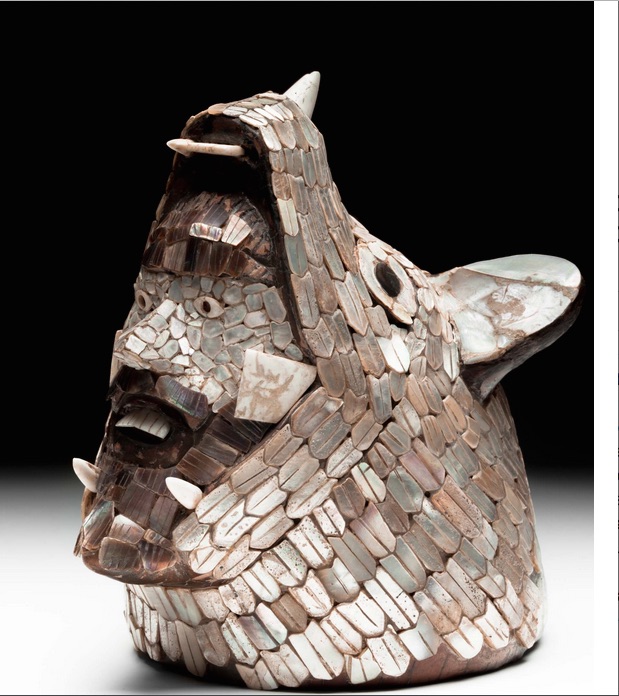Coyote Head

© Museo Nacional Antropologiía, Mexico. All Rights Reserved.
The Coyote Head is an example of plumbate pottery in the form of a coyote/human effigy. It features the head of a man emerging from the jaws of a coyote. The jaws are open wide, and the eyes of the coyote are cast upward. As if summoned by the coyote’s howl, the man emerges from the animal’s gaping jaws. The beard of the man is one with the lower mandible of the coyote. Both figures share a mother of pearl covering, and their teeth are made of bone. Consistent with the customs of many Mesoamerican civilizations, coyotes–along with jaguars, serpants, and eagles–are often used to represent warriors and warrior culture.
The Coyote Head was found in Tula, Hidalgo, Mexico–a significant archaeological destination, located northwest of Mexico City. The ruins at Tula date to the Early Postclassic period (ca. 700-1150 CE.) Archeologists note that Tula was a large and densely settled urban area that covered approximately 13 square kilometers.